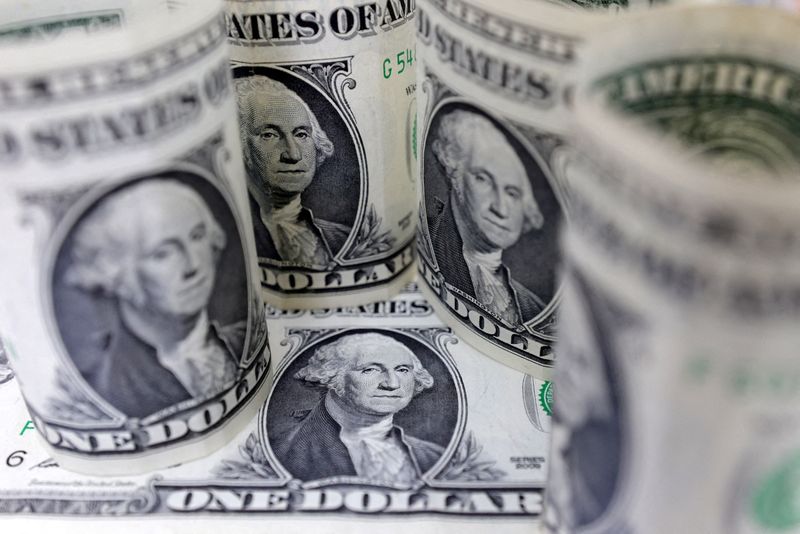By Gertrude Chavez-Dreyfuss
NEW YORK (Reuters) -The dollar slid on Monday as investors focused on U.S. inflation data due later this week, while the yen dipped to near 34-year lows, with traders remaining alert for any potential action from Japanese authorities to support the weakening currency.
The greenback fluctuated last week as traders digested a mixed bag of economic data amid a slowdown in services growth followed by unexpectedly strong hiring numbers that prompted the market to pare bets on Federal Reserve rate cuts this year.
The dollar index - which tracks the greenback against six other major currencies - was last down 0.2% at 104.12, while U.S. Treasury yields, which reflect interest rate move expectations, pushed higher.
Against the yen, the dollar firmed 0.1% to 151.76, within striking distance of the 34-year peak hit in late March.
The yen's weakness came in the wake of data showing Japanese workers' real wages fell in February for a 23rd consecutive month, suggesting higher prices weighed on consumers' spending appetite.
Inflation-adjusted real wages, a barometer of consumer purchasing power, fell 1.3% in February from a year earlier, data from Japan's Labour ministry showed. It followed a revised decline of 1.1% in January.
Japanese Prime Minister Fumio Kishida said on Friday authorities will use "all available means" to deal with excessive yen falls, stressing Tokyo's readiness to intervene in the market to prop up the currency.
"Broadly expect more jawboning from Japanese officials. I would not be surprised if the Bank of Japan does not intervene at 152 and the market snaps higher a little bit and then they come in and surprise us" said Amo Sahota, executive director at FX consulting firm Klarity FX in San Francisco.
"So the BOJ could say: we'll let it (dollar/yen) run up a little more. Have you all exhausted yourself now? Here's a lesson for you. So the BOJ could take that approach. For now, though, 152 is capping dollar/yen."
BOJ Governor Kazuo Ueda addressed the country's parliament on Monday, but gave little away on monetary policy and said he had succeeded in adopting a simpler policy framework.
In the United States, the main focus is on consumer price inflation for March due on Wednesday. Economists expect the headline consumer price index (CPI) to have risen 0.3 on a monthly basis, compared with 0.4% in February, according to a Reuters poll. Core CPI is also seen rising 0.3% for the month of March.
Ahead of the CPI data and after a strong jobs report last Friday, the U.S. rate futures market has reduced the odds of a June rate cut to 49%, down from 58% a week ago, the CME's FedWatch tool showed.
The market has also pared back expectations for the number of rate cuts this year to two, from three to four a few weeks ago, according to LSEG's rate probability app.
Chicago Fed President Austan Goolsbee on Monday acknowledged that the U.S. economy remains strong, but wondered how long the Fed can keep monetary policy restrictive.
In an interview with Chicago radio station WBEZ, Goolsbee, who is not a voter this year on the Federal Open Market Committee, said "if you're there too long, the unemployment rate is going to start going up."

The currency market though showed little reaction to his comments.
In the euro zone, currency investors will be looking to the European Central Bank's (ECB) policy meeting on Thursday. The euro was last up 0.2% at $1.089, while sterling last changed hands at $1.2660, up 0.2%. The base case for the ECB is to hold rates this week and possibly reinforce the possibility of a cut in June. But while the ECB is increasingly confident that inflation is heading back to its 2% target, it has remained vague about further easing. In cryptocurrencies, bitcoin was up 6.3% at $71,953 after hitting a three-week high of 72,732.59 earlier in the session.